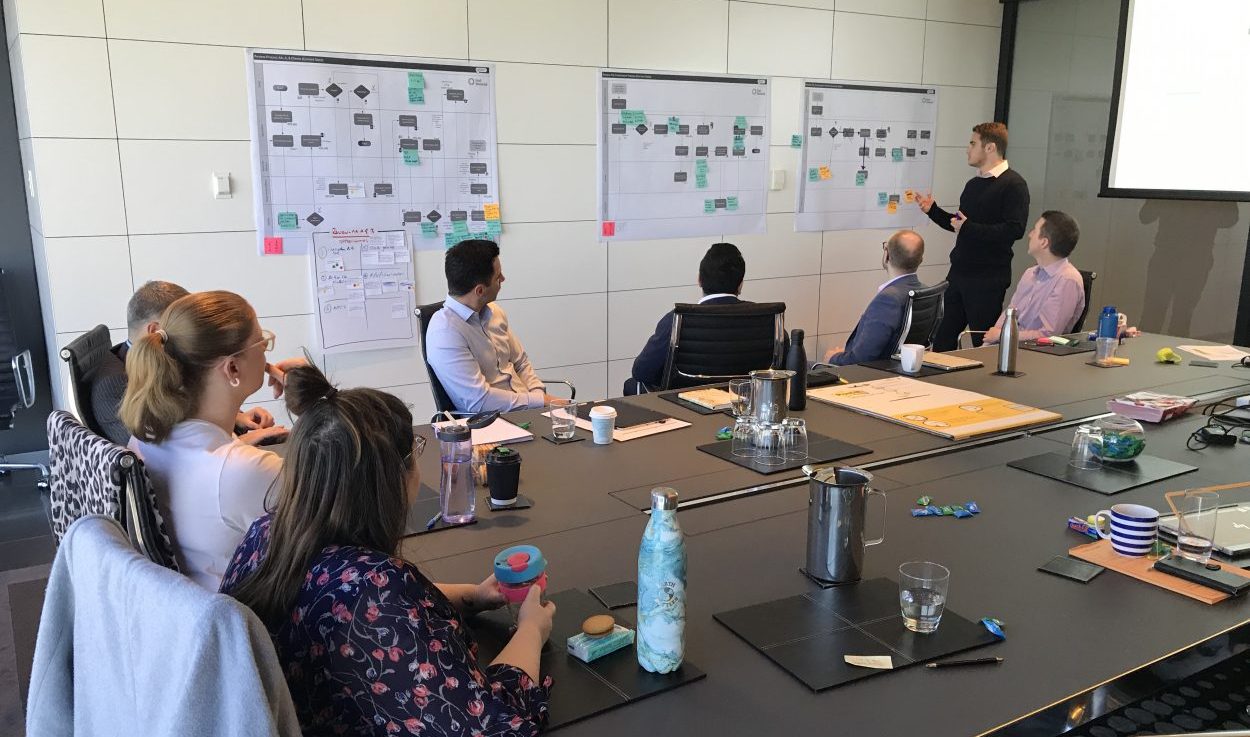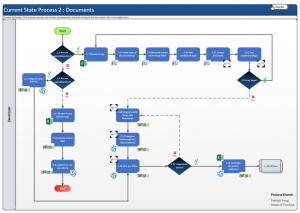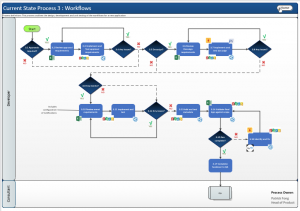Process mapping your way to utopia

So, you are planning on embarking on a technology project. You and your staff have a good understanding of your current processes and the issues faced within that process. You’ve identified bottlenecks and key pain points. You’re ready to start gathering your requirements and build a solution! Or are you?
Maybe someone in your team has it all in their head how they want the new process to work. Maybe it’s the product owner. But is that a shared vision? Much like how individuals’ imaginations can create a completely different looking and sounding character in their heads when reading the same book, (I’m still shaking my head at the chosen portrayal of Professor Umbridge in Harry Potter and the Deathly Hallows), different members of your team might have a different idea of how your future state process should look and work.
How can your team crystalise the future process vision if you don’t even yet know what technology is available to you? You don’t know whether the ideas you have will work until you’ve tried them. You can’t just make up a future process out of thin air, can you?
Knowing your current state means knowing your future state
Technically no, but logically you have all you need to make a start on your future process utopia. You know your business like the back of your hand. You have a wealth of experience to draw from within your team in your industry. Maybe you even have a wealth of experience spanning other industries to draw on in your current resource pool. If so, think yourself lucky as these little nuggets are often where the most out of the box thinking originates from.
Now ask yourself, if you could implement a process that solved all of the issues identified, what would it look like? Now map it out. Map the process considering what the activity is being performed, who is performing the activity and what technology is involved. Quite often when organisations do this, they are left with a vastly different visual representation from their current process. The map of future process utopia will be greatly simplified and creates a visual baseline to start the process of working out how you are going to solve the problems faced.
Here is an example of a real current state vs future state process maps from one of our clients. The original process involved 3 separate processes whilst the future state process involves only one.
From this……..



To this…………..

If you do not, beware
You’re probably thinking, I don’t need to do that, everyone in my organisation is on the same page. We have a shared understanding of the issues we face and how to solve them. Besides, nothing bad will happen if we just jump straight to building the requirements without mapping the future process….
Well I am here to tell you bad things can happen. If this step is missed, you may fall into the trap of building exactly the same system, but you’re now hundreds of thousands of dollars worse off. Why waste an opportunity to re-think your process? Why risk building a replica system that works within the confines of your current process or technology limitations?
Obviously, a bit of common sense needs to feed in here. You still might have certain parameters that you must work within, for example if a solution goes against a legal compliance requirement, you should probably keep those kinds of things in the back of your mind at all times.
Change management benefits
The added bonus of mapping a future state utopia is that it creates “buy in” from your staff. Because the process is so stripped back, it is easier for them to digest, take a step back and breathe it in. It also creates excitement about the future state, without all of the current problems.
Process mapping utopia leads to change
Just because you’ve mapped your future utopia, this doesn’t mean it’s set in stone. You’ll undoubtedly have to make tweaks along the way. The design idea you had may not being feasible or possible. You may have to add or remove steps to cater for new legislative requirements or government regulations. That’s okay. The purpose of mapping your utopia is to get your team to start the process of thinking differently more efficiently, free of the current constraints.
Once you have visualised your future state utopia, you can start gathering requirements that fit in with this new framework. After you have chosen the technology solution that will be implemented, you can work backwards at refining your future state process based on the requirements that are being met by the technology solution.
I guarantee you will end up with a very different result than if you had not mapped your utopia.
